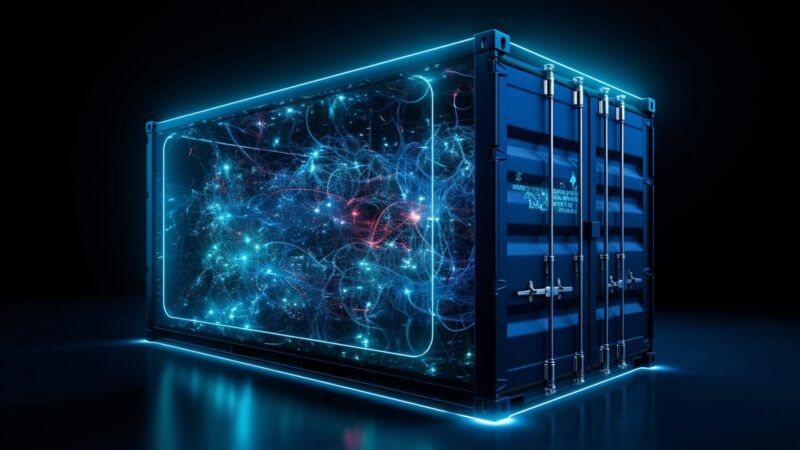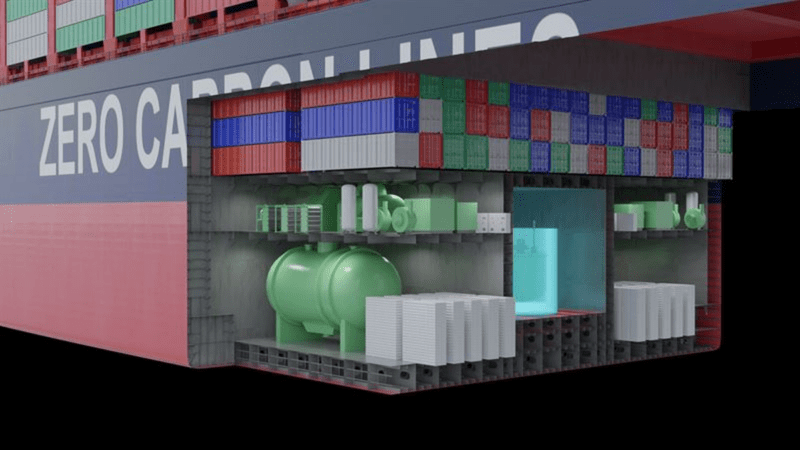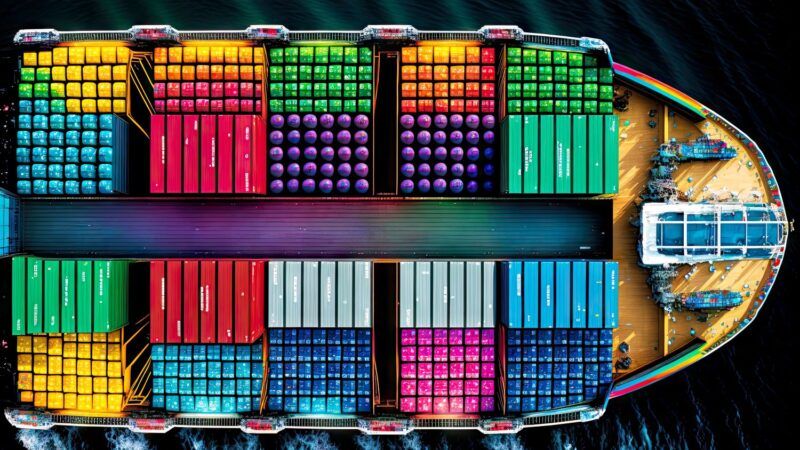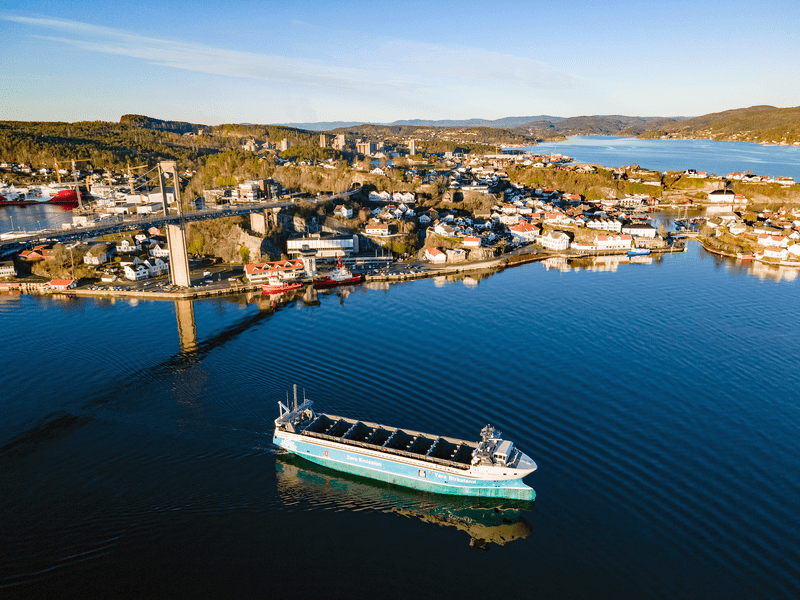 In the next two years, the Yara Birkeland will be working towards its certification as an autonomous, all-electric container ship (Yara International).
In the next two years, the Yara Birkeland will be working towards its certification as an autonomous, all-electric container ship (Yara International).
Target 2025: the year of ship automation
If forecasts are met, ship automation will happen as early as 2025. The pioneer is the container ship Yara Birkeland, which has already completed a voyage with autonomous technology on board.
 In the next two years, the Yara Birkeland will be working towards its certification as an autonomous, all-electric container ship (Yara International).
In the next two years, the Yara Birkeland will be working towards its certification as an autonomous, all-electric container ship (Yara International).
The big autonomous ships are already here. Or almost. Six months ago, in November 2021, the Yara Birkeland, a 120 TEU container ship with a top speed of 15 knots, demonstrated the potential of autonomous technologies by sailing between Horten and Oslo in Norway, completing a project that began in 2017 and has not yet been completed.
"The main reason for this delay is that it is necessary to legislate for systems that have never been used before. The Yara Birkeland is the pioneer, it is normal that it is a slow process," Päivi Haikkola, programme manager at DIMECC (Digital, Internet, Materials & Engineering Co-Creation), one of the promoters of One Sea, an ecosystem made up of ten Scandinavian companies seeking to boost the automation of maritime logistics, explains to PierNext.
Once this demonstration has been performed, the different technologies will be tested over the next two years to achieve certification of the Yara Birkeland as an autonomous and fully electric container ship.
Increasing safety and sustainability
The first compelling reason for implementing ship automation is safety. It seems a contradiction in terms - autonomous ships that are safer than manned ones? Well, yes, because as One Sea argues, automation systems provide reliable data 24 hours a day, regardless of weather conditions and physical obstacles, as well as monitoring different parameters simultaneously.
The second is sustainability. In the case of Yara Birkeland, the aim is that once fully operational, it will replace the land transport that makes the journey between Yara's plant in Porsgrunn, southern Norway, and the export port in Brevik, some 14 km away by road, transporting mineral fertiliser.
The Norwegian container ship is powered by a 6.8 MWh battery system with integrated liquid cooling to ensure optimum temperature. The modular and scalable lithium-ion battery system for marine applications Leclanché Marine Rack System (MRS) ensures optimal cell temperature control.
Yara Birkeland's goal is to reduce the 40,000 diesel-powered truck trips per year on this route, which is equivalent to 1,000 tonnes of NOx and CO2 emissions.
"We are currently working to get the International Maritime Organisation (IMO) to establish a common legal framework for increased automation and remote operations in maritime traffic," says Päivi Haikkola.
The technologies that drive ship automation
- Digitisation
Remote and autonomous digital technologies for ships are already being adopted by shipowners and operators on new vessels. The most widespread example is electronic documentation in shipping.
- Sensors
The Yara Birkeland has a number of sensors on board that can, for example, detect obstacles and transmit information for the ship's autonomous system to make better decisions.
- Machine Vision
A field of Artificial Intelligence that teaches computers to 'see' and understand the content of digital images.
- Communication networks
For Haikkola, this is one of the aspects to be improved in the case of the Yara Birkeland, as it currently has three systems on board, two terrestrial and one satellite. This is an added cost that will be reduced in the future.
The factor that will determine the viability of autonomous navigation from 2025 onwards is the regulatory framework
The legal framework for the automation of navigation
"The IMO has been quite efficient in trying to regulate shipping automation because its global agenda includes reducing emissions. Three of its four working groups are looking at this to identify the needs and make the necessary changes," says Haikkola.
At the last committee meeting in April this year, the IMO approved a roadmap containing a work plan for the development of tools for the so-called MASS (Marine Autonomous Surface Ship).
At a preliminary stage, this plan foresees the development of a target-based instrument in the form of a non-binding Code with a view to its adoption in the second half of 2024. Based on the experience gained in the implementation of the non-mandatory MASS Code, a mandatory MASS Code will be developed and is foreseen to enter into force on 1 January 2028.
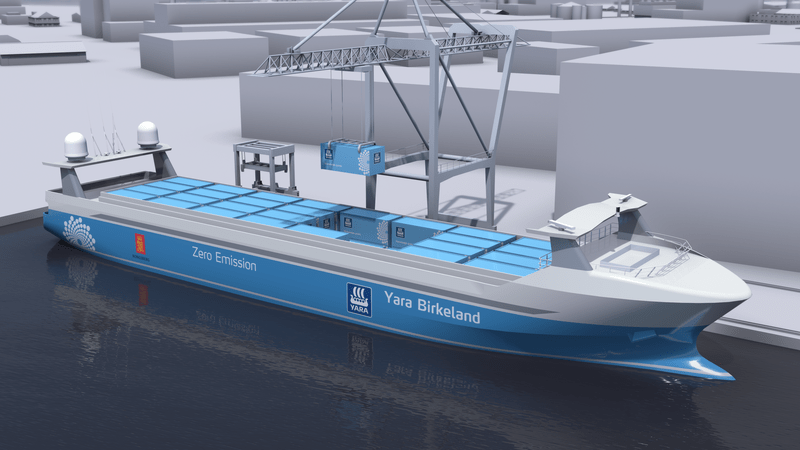
"It is very positive that they are starting to work in this direction and that other organisations such as IALA and ISO are also showing interest," he says.
The industry and the ports
Haikkola stresses the importance of creating this regulatory framework, as it will enable the development of technologies such as those mentioned above. "Currently, to get approval for, for example, solutions such as machine vision, you have to go to the national authorities. If the ship is then sold to another country, you have to start all over again," she explains.
The expert explains that shipowners are not "very inclined" to adopt new technologies, but beneficial cargo owners are showing more interest in how goods are transported and that this is done in a climate-neutral way.
"We need more commercial expansion. It is also important that ports incorporate automation into their operations because otherwise they will not take full advantage of the benefits that autonomous ships offer when they dock at their facilities. This must apply to the whole logistics chain, not just one of the links, such as ships," she argues.
Haikkola argues that it is easier to automate electrically powered vessels and welcomes OPS solutions. However, ports need to go a step further by digitising their operations and providing a network with higher latency and bandwidth in shipping areas close to ports, such as 5G.
Automation of ships in 2025, utopia or reality?
Another recurring debate about automation is the question of the human factor, which Haikkola clarifies. "People will be involved in many stages of automation and will probably have to learn new skills. While it is important to manage the relationship between machines and people, maritime professionals, who are used to interacting only with each other, must cooperate more with IT experts," he argues.
Once again, the factor that will determine the viability of autonomous shipping after 2025 is the regulatory framework. "The target set by the IMO is ambitious. I think it is more feasible to incorporate digital technologies on board and progressively increase automation. It is a common effort, not an individual one," she says.
The expert believes that automation is particularly interesting for small cargo ships that make short, routine journeys, as will be the case of the Yara. It is also an interesting solution for inland waterways, because of the aforementioned alternative to road transport. Every day we are a little closer to a greener and more automated future.



